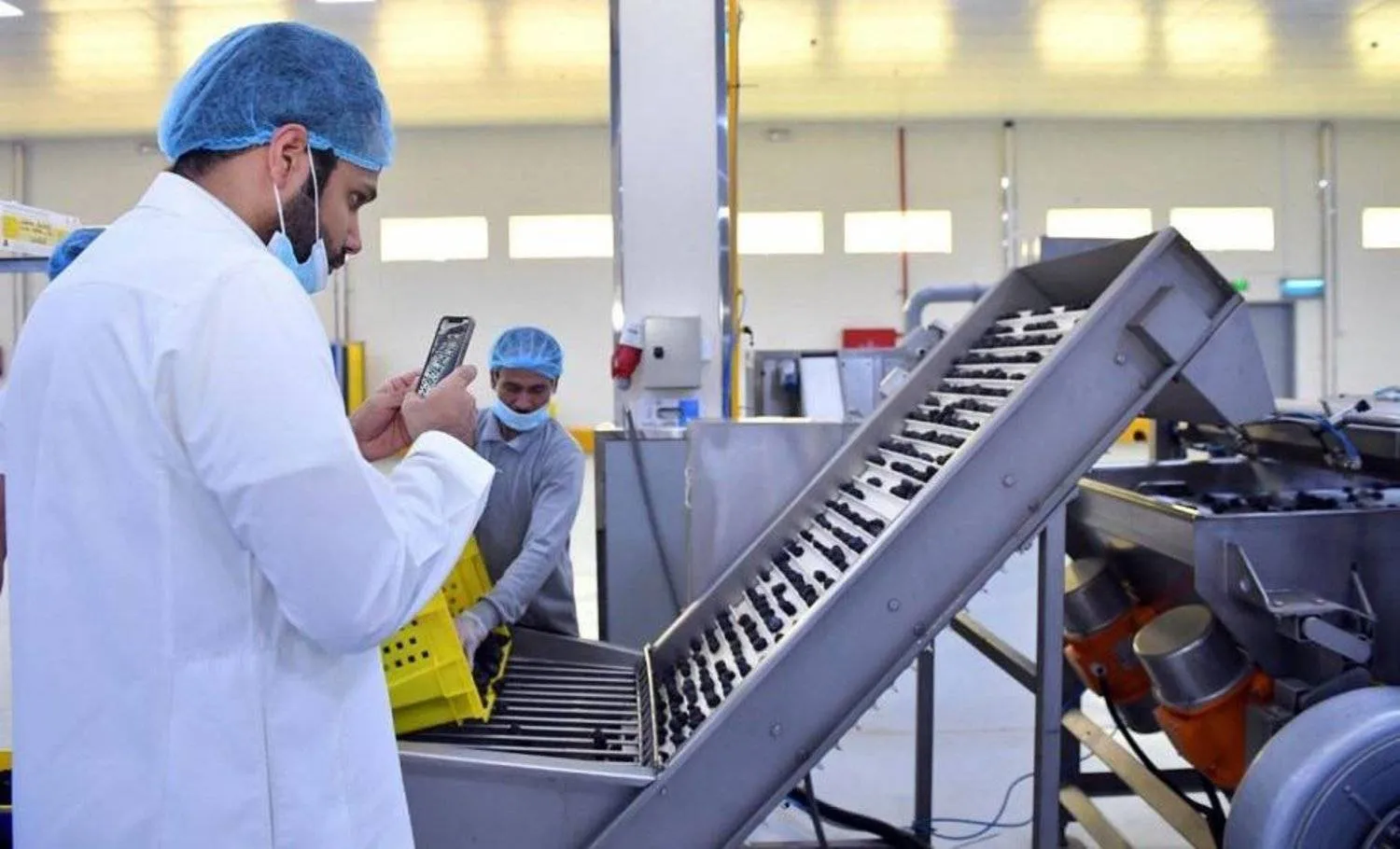A Bold Move for Domestic Industry
The Saudi Local Content and Government Procurement Authority (LCP-Authority) has announced a bold new target: expanding the mandatory list of locally produced products to 2,000 items by 2026, up from roughly 1,500 today.
This expansion demonstrates the Kingdom’s commitment to deepening domestic manufacturing, building more resilient supply chains and creating value inside the country. By making more items subject to localisation requirements, the move sends a clear message: Saudi Arabia is serious about turning imported goods into home-grown opportunity.
Why Is This Happening Now?
Aligning with Vision 2030
Saudi Arabia’s transformation agenda emphasises diversification of the economy away from oil, greater participation of private sector and citizens in growth, and capturing more value inside the Kingdom. Local content policy is a key tool in that shift.
Leveraging Growing Industrial Capabilities
The LCP-Authority’s leadership believes the expansion depends on local industries’ ability to scale, innovate and meet government procurement demand.
Maximising Domestic Value Creation
The mandatory list mechanism means that government entities must prioritise products manufactured locally when they appear on the list. This shift keeps more spending inside Saudi Arabia, supports jobs, and strengthens local supply chains.
What’s Changing – The Scope and Scale
Growing the Mandatory List
When the LCP-Authority began in 2019, the mandatory list included about 100 nationally produced products. Today the list covers some 1,444 products across 16 sectors. By 2026, the target is to reach 2,000 items.
Focus Sectors
The growth will centre on key sectors including pharmaceuticals, food, machinery and equipment, as well as emerging areas such as cybersecurity technology.
Measures of Success
Beyond just listing items, the policy aims to raise the local content share in government procurement and national projects from about 30% currently to nearly 50%.

The Impact – Why It Matters
For Local Industry
For Saudi manufacturers, the enlarged list means more guaranteed demand from government procurement, stronger incentives to scale up, and clearer signals to invest in domestic capacities. Building machinery, producing pharmaceuticals or manufacturing food items locally becomes a more attractive proposition.
For Employment and Skills
As domestic production rises, so does the opportunity to train and employ more Saudi citizens, fill supplier roles, and upgrade workforce skills across manufacturing and services. The ripple effect on jobs and skill-development is significant.
For Supply Chain Resilience
By replacing imported goods with locally produced alternatives, the Kingdom reduces its vulnerability to external shocks, currency fluctuations or supply-chain disruptions. A stronger domestic base means greater self-reliance and resilience.
For Value Creation and Economic Diversification
Every item moved from import to local production retains value within the economy: manufacturing, packaging, logistics, maintenance, training and more. That reinforces the shift from raw material export towards higher value-added production.
Opportunities for Stakeholders
Government Entities
Procurement teams will need to adjust sourcing strategies, categorise listed items, verify local content compliance, and build partnerships with domestic suppliers. Clearer frameworks, evaluation criteria and supplier development become essential.
Domestic Suppliers and Investors
Manufacturers already active or contemplating entry into sectors like food processing, machinery, pharmaceuticals or tech should view the rising list as a growth opportunity. Aligning production with mandatory list requirements, meeting quality standards and scaling capacity will position them for success.
Foreign Companies
Those operating in Saudi Arabia should reassess their supply chain footprint. Local partnerships, joint ventures, transfer of technology and localisation of production may become not just competitive advantages but prerequisites for procurement eligibility.
Workforce and Education Providers
The demand for locally produced goods will drive needs for skilled labor, technicians, quality engineers, supply-chain specialists and R&D professionals. Educational institutions and training providers can gear curriculums to this upcoming demand.
Challenges and Considerations
Meeting Quality and Standards
Expanding the list is one thing; ensuring that local products meet required specifications, reliability and durability is another. Domestic manufacturers will need to invest in quality systems, certification, R&D and continuous improvement.
Scaling Production Capacity
Going from dozens or hundreds of items to thousands entails scaling manufacturing capacity, supply of raw materials, logistics, workforce training, and production planning. This scaling process requires time, funding and coordination.
Ensuring Cost Competitiveness
Imported items may still retain cost advantages in some categories. For local products to succeed, cost, delivery, quality and service need to work together – otherwise procurement entities may face tension between policy push and actual value.
Supply Chain Integration
Production localization often means more than assembly or final finishing—it means parts, sub-components, logistics and services being present locally. Building this full ecosystem can be complex and takes time.
Monitoring and Compliance
Ensuring that items truly meet the “local content” definition, within the list items, and tracking progress towards targets is a management challenge. Clear measurement, reporting and auditing systems are required.
Real-World Examples in Focus
One notable example is the cybersecurity sector. The authority recently signed its first agreement to localise products such as firewalls and data-leak prevention systems, highlighting strategic importance and high-value technology localisation.
In pharmaceuticals, the local push means not just packaging pills locally but potentially producing active pharmaceutical ingredients, expanding registrational capabilities and aligning with domestic supply-chain needs.
In food and machinery sectors, localisation means moving beyond simple processing to manufacturing and integration of components, enabling domestic value chains that previously relied on imported inputs.
What It Means for the Kingdom’s Long-Term Future
This localisation drive is more than procurement policy it is a lever for structural change. By embedding local production into government purchasing, Saudi Arabia is shifting the economy’s architecture. Over time, more value will be generated domestically, more jobs created for citizens, and the economy will rely less on imported goods and more on internal strengths.
It also strengthens the Kingdom’s international competitiveness: as local suppliers gain experience and scale, they may begin exporting, innovating and serving regional markets. The multiplier effects across manufacturing, services, logistics and education are significant.
In the context of global uncertainty disruptions, supply-chain shocks, rising costs having a robust domestic base becomes a strategic asset. Saudi Arabia’s plan to raise local content share and expand the mandatory list to 2,000 items by 2026 reflects precisely that forward-looking mindset.
What to Watch Next
- Expansion pace: How quickly the list grows, and whether the 2,000-item target is met by 2026.
- Sectoral breakdown: Which industries see the greatest growth, and how domestic capacity is built in each.
- Supplier performance: Whether local manufacturers can meet the technical standards, volumes and costs required.
- Procurement behaviour: How public agencies adapt sourcing frameworks, qualification criteria and compliance systems.
- Exports from local industry: Whether domestic production begins not only to satisfy local demand but also serves regional or global markets.
- Jobs and workforce impact: Growth in skilled employment, training programmes and localisation of expertise.

Why This Story Matters to You
If you’re a business operating in or with Saudi Arabia, this policy shift shapes the rules of engagement. Local production is increasingly part of the equation whether you’re supplying goods, forming partnerships or bidding for government contracts.
If you’re an investor or entrepreneur, the localisation agenda signals opportunity: building factories, forming joint ventures, developing supply chains and investing in workforce skills all align with the national direction.
If you’re a professional tracking global trade and supply-chain trends, the move illustrates how procurement policy is now a strategic tool for economic development. Governments aren’t just buying they’re shaping industries.
A Human Perspective
Behind the policy and numbers lie real people: engineers developing new lines, workers staffing factories, procurement officers adjusting to new mandates, entrepreneurs seizing the chance to build something meaningful. This is about livelihoods, careers, and national pride.
Imagine a young Saudi engineer designing a machine in the Kingdom that was previously imported. Or a local food processor sourcing ingredients from domestic farms rather than shipping them from overseas. These small shifts accumulate into a transformation of everyday life and economy.
The policy says: we believe in our industries. We trust our people. We invest in our future. And that human promise is as important as the economic calculus.
Final Thoughts
The path ahead is bold, ambitious and full of potential. Expanding the mandatory list of locally produced goods to 2,000 items by 2026 is not simply a numeric target it is a statement of confidence in Saudi Arabia’s domestic capabilities, a push for greater self-reliance, and an investment in the people of the Kingdom.
The transition will require coordination, quality execution, strong partnerships and patience. But the payoff is significant: stronger industries, more jobs for nationals, greater value capture, and a diversified, resilient economy.
As the Kingdom moves from import dependence towards domestic strength, the journey will matter just as much as the destination. The story of how goods once brought in become built from within is one of transformation industrial, economic, and human.
Do follow Gulf Magazine on Instagram.
Also Read – Saudi Drug Authority Launches AI Model to Prevent Medicine Shortages



